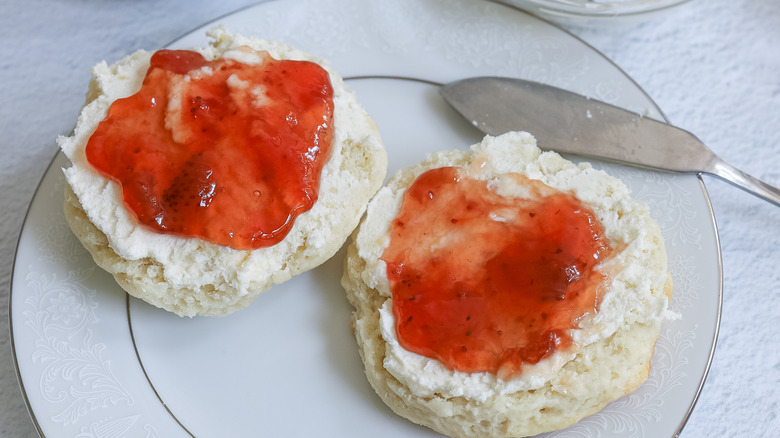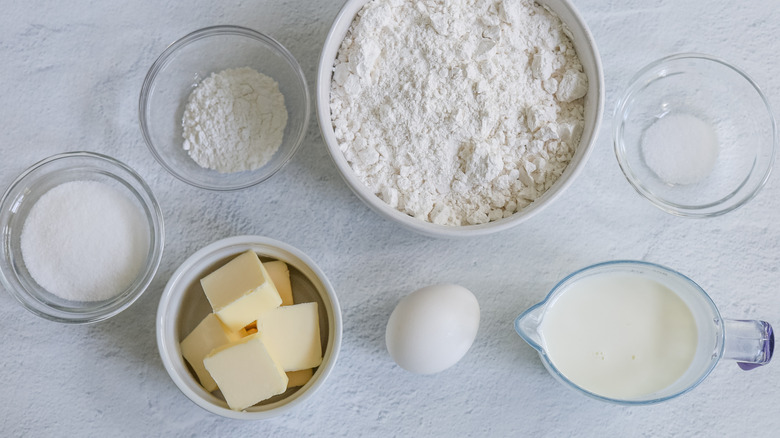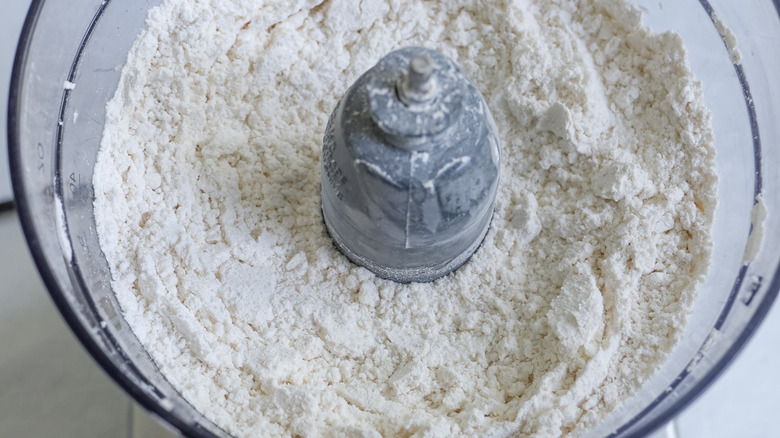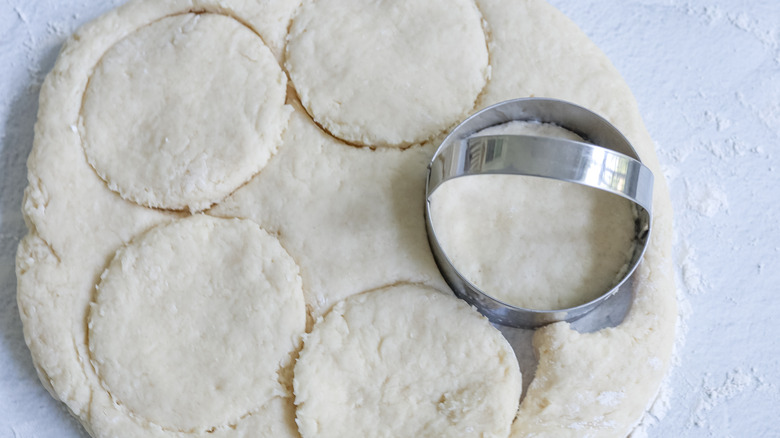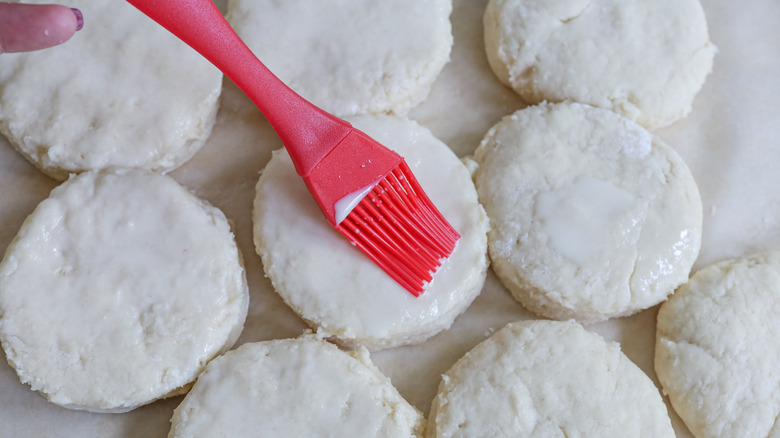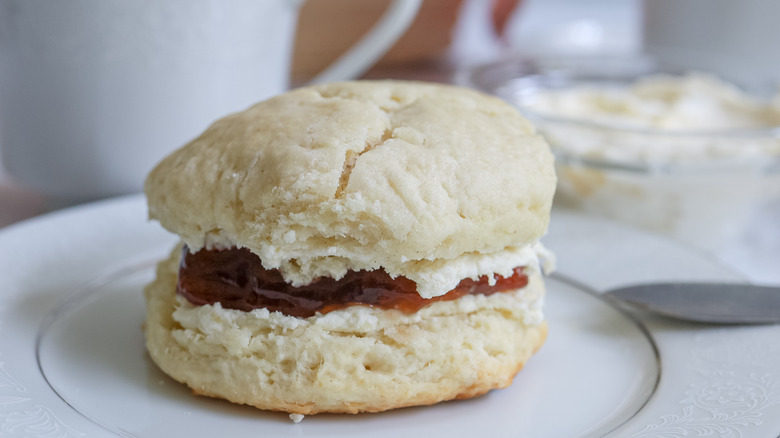Classic English Scone Recipe
There are few baked goods that feel quite as prim and proper as a classic English scone, and perhaps that's because we so often associate them with cordial tea parties and other highly-esteemed events. While you certainly could make a batch of scones for a tea party fit enough for royalty, you can also whip up a batch for any old reason. Recipe developer Jessica Morone has crafted this classic English scone recipe, and it's much easier to whip up the baked good from scratch than you might think.
As a matter of fact, one of Morone's favorite aspects of this recipe is just how easy it is to make. "They use all ingredients that you probably already have in your kitchen, and using the food processor means you can whip them up quickly," Morone explains.
And no, you don't need any special ingredients; in fact, the ingredients list is incredibly short, and nearly all of the items are likely already sitting in your pantry or fridge. Whether you're prepping to serve a queen or you just want a good old-fashioned homemade baked good, these classic scones are multifaceted enough to fit the bill.
Gather the ingredients for classic English scones
We've already mentioned that this ingredients list is a short one; all told, you'll need all-purpose flour, salt, baking powder, sugar, butter, milk, and an egg. You may also want some jam or clotted cream on hand to spread on your freshly-baked scones.
Use a food processor to begin making the dough
Begin by preheating your oven to 425 F with a large baking sheet inside so it can heat up at the same time. Then, grab your food processor and add in the flour, baking powder, sugar, and salt, and give it a few pulses to combine. Add in the cubed butter and pulse a couple more times, which should incorporate the butter into the flour. The mixture should look something like coarse sand.
"Using the food processor to make the dough makes it a lot quicker and easier than if you cut in the butter with a fork, a pastry cutter, or your fingers," Morone says.
Transfer the coarse flour mixture to a large bowl and in a separate small bowl whisk the milk and egg together. Reserve about 2 tablespoons of this milk/egg mixture to use for a wash later on, then pour the remaining mixture into the bowl with the flour.
Cut out the scones from the dough
Mix up the contents of the bowl until you have a shaggy dough. Pour the dough out onto a floured surface then knead it a few times, just until it's smooth. Press the dough down into a circle that's about 1 inch thick.
"You want to make sure you are being gentle with the dough ... you don't want to be too rough with it or the scones can end up being tougher," Morone advises.
Using a 2½-inch cookie cutter or the floured rim of a glass, cut round scones out of the dough. Then place the rounds onto a piece of parchment paper, making sure that the scones are touching. "Baking the scones right next to each other makes sure that they rise up tall," Morone explains.
Once you've cut all possible circles from the dough, reshape the scraps into a 1-inch thick circle once again and cut out more. You should have enough dough to make eight scones.
Bake the scones
Once you've cut out all of your scones, brush the reserved milk and egg wash on top of each one. Then, remember that baking sheet you put in the oven earlier? Remove it from the oven at this point (carefully, of course) and transfer the scones to the sheet — parchment paper and all. While this isn't standard practice for most baked goods, preheating the baking sheet makes the scones start to rise as soon as they hit the hot baking sheet. This helps them get tall while they bake.
Use an oven mitt to transfer the scones to the oven and allow them to bake for 13 to 15 minutes. You'll know that they're ready to go when they've risen a bit and have a beautiful golden hue.
Enjoy these classic English scones with jam and clotted cream
After you remove the scones from the oven, let them cool down a bit before digging in. When you're ready to reap the benefits of a freshly-baked scone, and Morone has a few serving suggestions. "These are best served warm with clotted cream and jam, and are traditionally served at afternoon tea time," she explains. "But you aren't confined to that, you can top them with any toppings you'd like, and I like to eat them for breakfast."
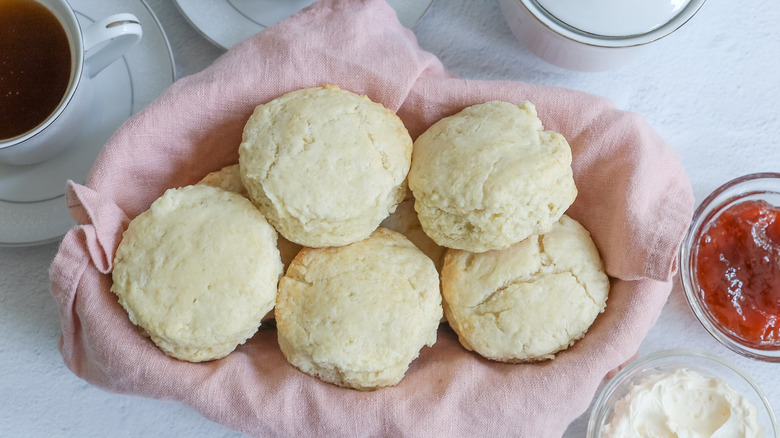
- 2 cups all-purpose flour
- ½ teaspoon salt
- 5 teaspoons baking powder
- 3 tablespoons sugar
- 6 tablespoons butter, cubed
- ⅔ cup milk
- 1 egg
- Clotted cream, for serving
- Jam, for serving
- Preheat the oven to 425 F. Set a large baking sheet into the oven to heat up while the oven preheats.
- In a food processor add the flour, salt, baking powder, and sugar. Pulse a few times to combine.
- Add the cubed butter and pulse until the butter is integrated and the mixture resembles coarse sand. Transfer the mixture to a large bowl.
- In a small bowl whisk together the milk and egg until well combined. Transfer 2 tablespoons of the mixture to a smaller bowl to save for later as an egg wash. Pour the rest of the mixture into the bowl with the flour mixture.
- Gently mix the flour and egg mixtures together until a shaggy dough forms. Transfer the dough to a lightly floured surface and knead a few times with floured hands until the dough is smooth. Press the dough into a circle about 1 inch thick. Use a 2½-inch round cutter or floured glass to cut out scones. Take the cut-out scones and place them on a piece of parchment paper making sure they are touching. Use the dough scraps to create another circle to cut out more scones, repeating until all the dough is used.
- Brush the tops of the cut-out scones on the parchment paper with the reserved egg wash. Carefully remove the hot baking pan from the oven and place the parchment paper on the hot baking sheet. Carefully place the baking sheet back in the oven and bake in the preheated oven for 13 to 15 minutes until golden.
- Let scones cool, then serve with clotted cream or jam as desired.
| Calories per Serving | 230 |
| Total Fat | 10.1 g |
| Saturated Fat | 6.0 g |
| Trans Fat | 0.0 g |
| Cholesterol | 44.9 mg |
| Total Carbohydrates | 30.2 g |
| Dietary Fiber | 0.8 g |
| Total Sugars | 5.8 g |
| Sodium | 245.1 mg |
| Protein | 4.6 g |
